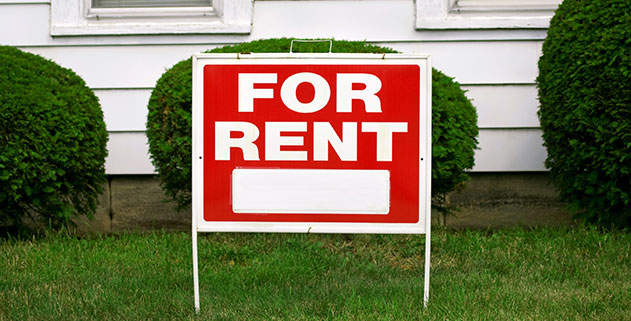The vacancy rate for the single-family rental homes in Colony American Homes’ $513.6 million securitization is rising and it’s rising quickly.
In the last two months, the month-end vacancy rate has risen nearly 77%, from 3.9% in April to 6.9% in June. There are 3,396 single-family rental properties that support Colony American Homes’ first securitization, which launched in March.
The number of vacant properties has jumped from 132 in April, to 184 in May, to 236 in June.
That means vacancies jumped from less than 4% to around nearly 7%.
In terms of vacancies determined by the amount of cash collected, the vacancy rate is lower, but still increased 72.2% — from 3.6% in April to 6.2% in June.
Additionally, the month-end delinquency rate has more than doubled in the last month. In May, the delinquency rate was 0.7%. It rose to 1.5% in June, which represents an increase of 114%.
By comparison, the delinquency rate actually dropped from April to May, by 0.1%.
In total, the vacancy and delinquency rate by property count has risen nearly 81% in the last two months, from 4.7% in April to 8.5 in June.
On the securitization’s cutoff date of February 1, the underlying properties were 100% rented and had no delinquencies.
But according to a performance update from Morningstar, the net cash flow based on the total rent collected is still sufficient to cover the bond obligations. Morningstar factors in an expected vacancy rate of 9% for the underlying properties, so despite the drastic increase, the vacancy rate is still below Morningstar’s expected threshold.
Perhaps these fluctuations are to be expected, considering the fickle nature of renters. In the last few months, the vacancy rate for the homes that make up the $1 billion REO-to-rental securitization from Invitation Homes has seesawed between 5.5% in April, to 7.3% in May and back down to 6.8% in June.
Morningstar expects these jumps to subside in time. “Initial lease expirations are anticipated to peak in July and August this year,” Morningstar reported. “As the number of expiring leases declines following this peak and vacant properties become occupied, Morningstar expects the month-end vacancy rate to stabilize and to potentially decline.”
Morningstar does caution that it reviews the vacancy rates at the end of the respective months, when vacancies tend to be higher than in other points in the month.
Morningstar also provided a report on Colony American Homes’ second REO-to-rental securitization, which was brought to market in June. CAH 2014-2 was a $558.5 million single-family rental securitization based on 3,719 income-producing properties.
The vacancy rate for CAH 2014-2 stands at 0.9% as of June 30. Of the 3,719 properties, 35 were vacant at the end of June.
The delinquency rate was even lower, at 0.1% for June, with only four properties reported as delinquent.
Of note is the fact that more than a third of the vacant properties are located in Tampa/St. Petersburg/Clearwater, Florida.
“Initial lease expirations are anticipated to gradually increase through the remainder of 2014 before peaking in February 2015,” Morningstar’s report states.
“As the number of expiring leases increases, Morningstar expects the month-end vacancy rate to steadily rise through the February 2015 peak, after which time, the vacancy percentage should stabilize and potentially decline. Morningstar’s expected stabilized vacancy rate is 10.3% for this transaction.”
As with Colony American’s first rental securitization, Morningstar reports that the net cash flow based on the total rent collected is sufficient to cover the bond obligations.






